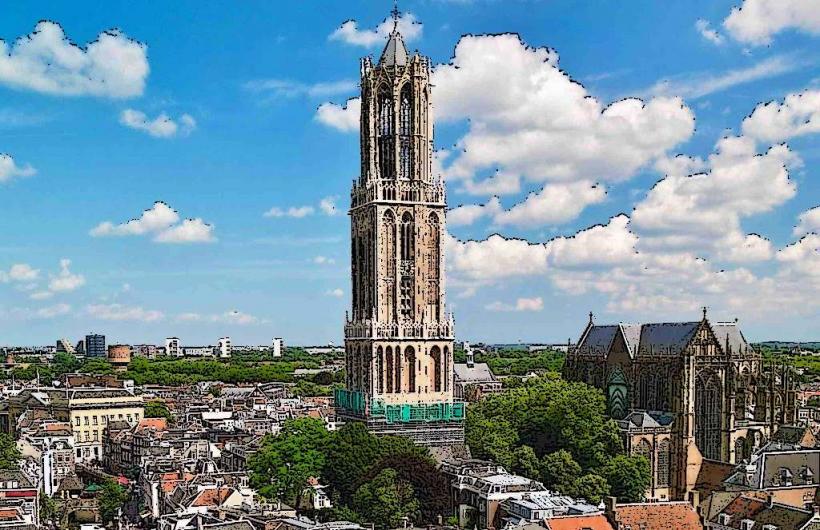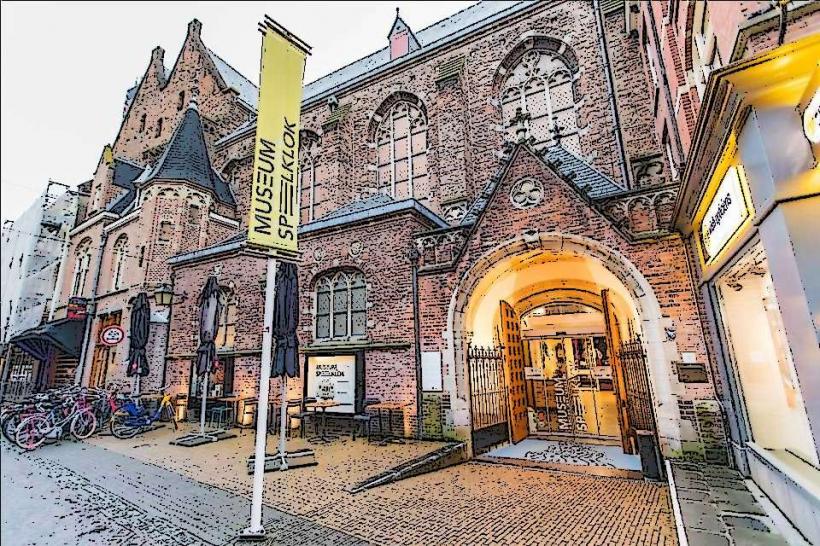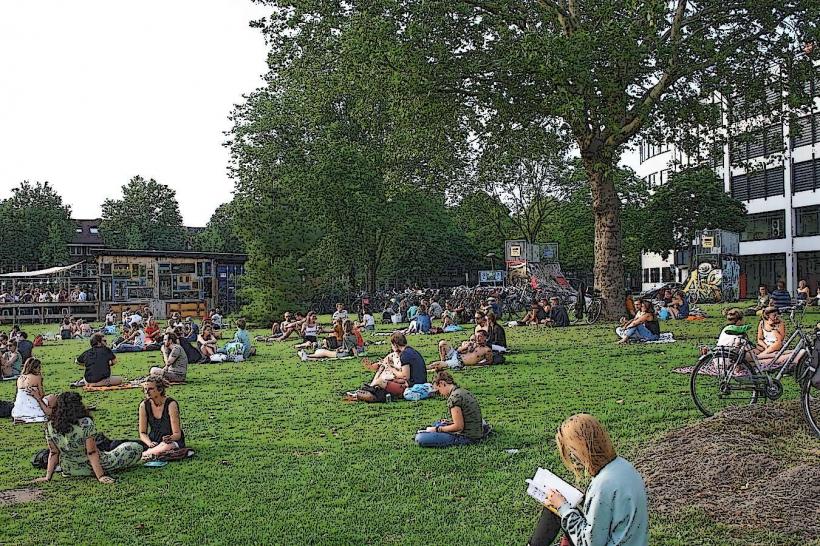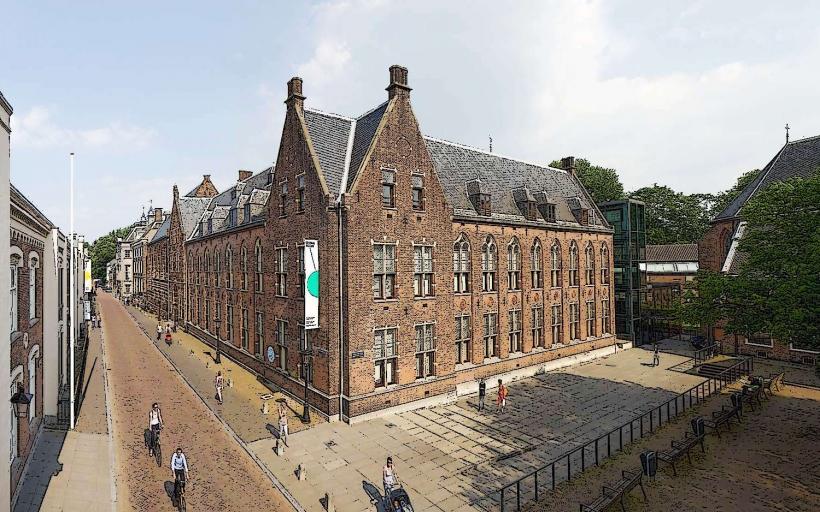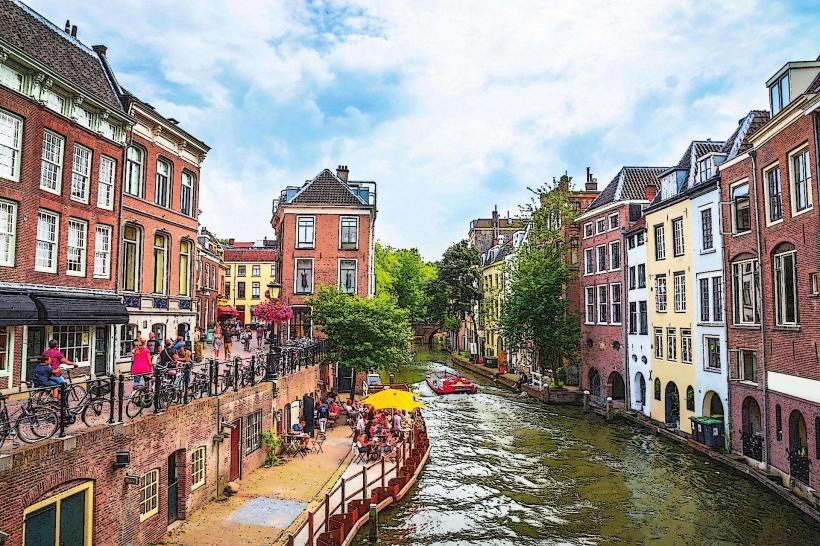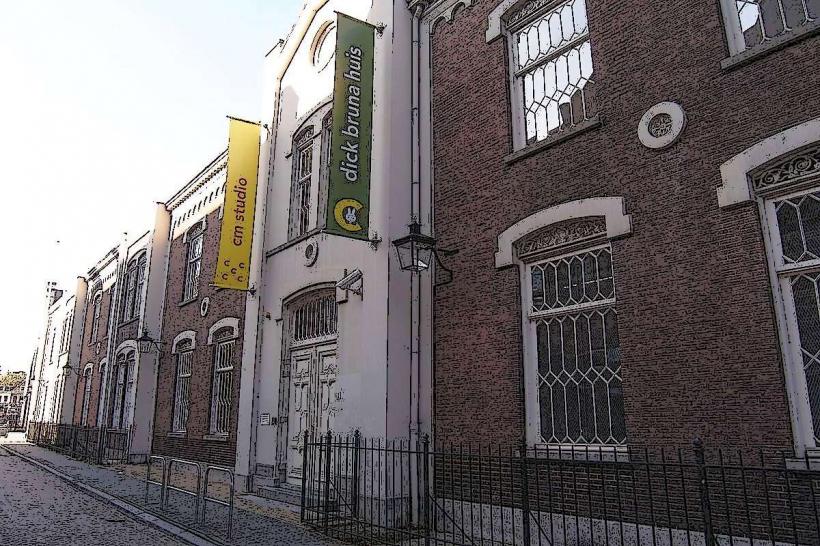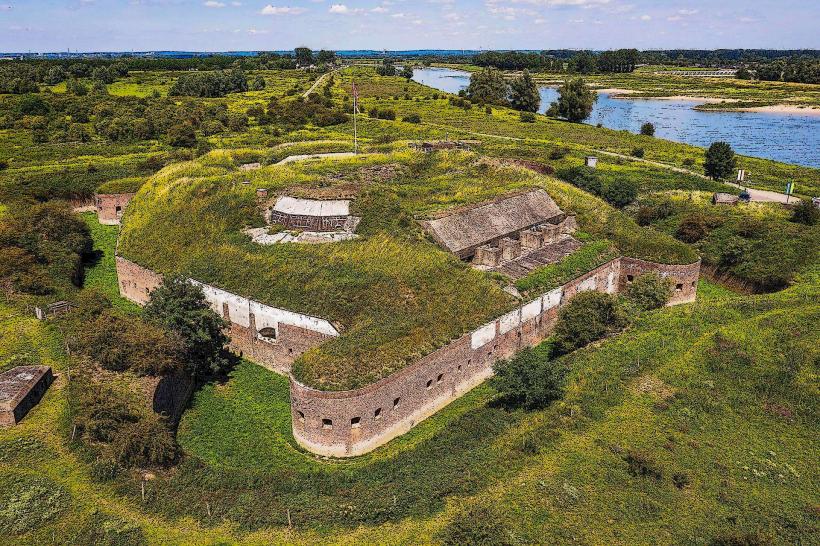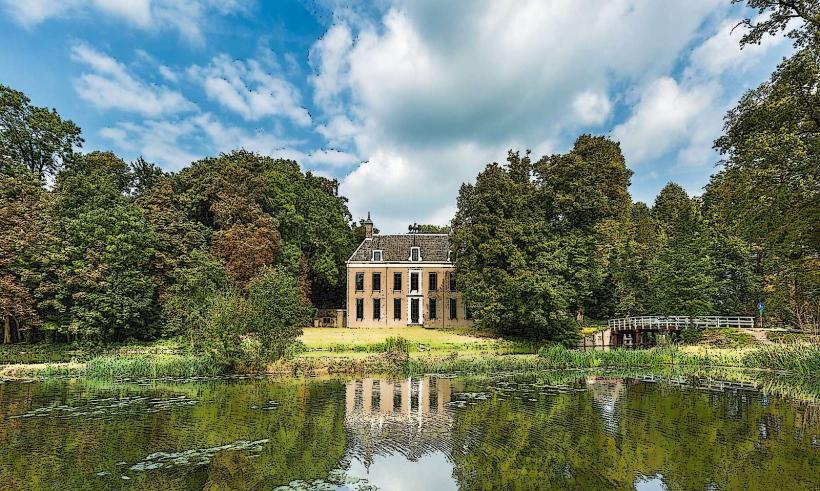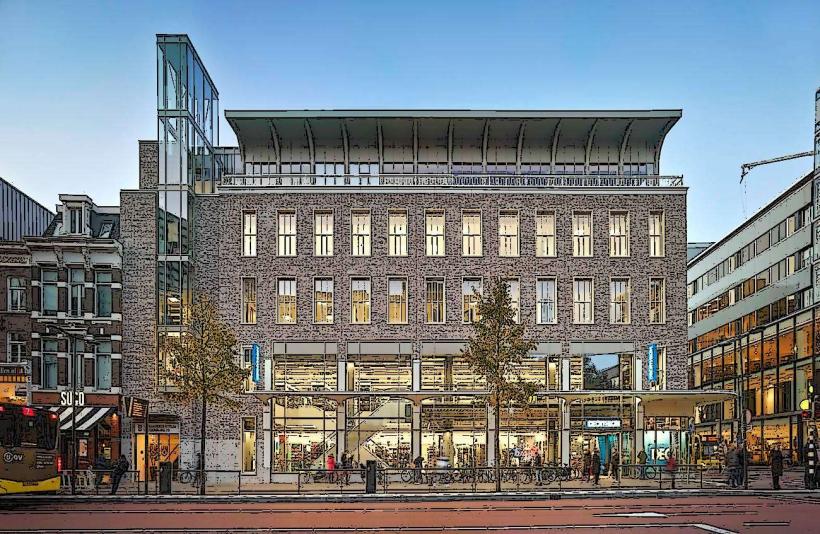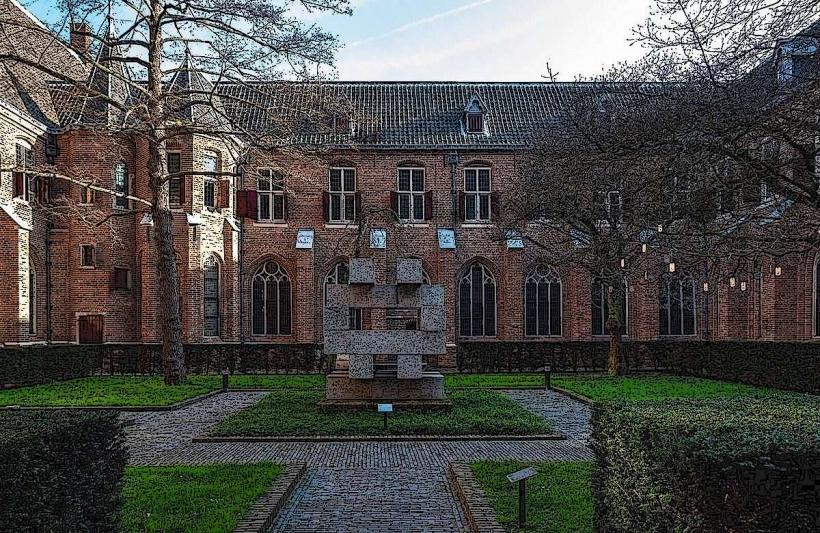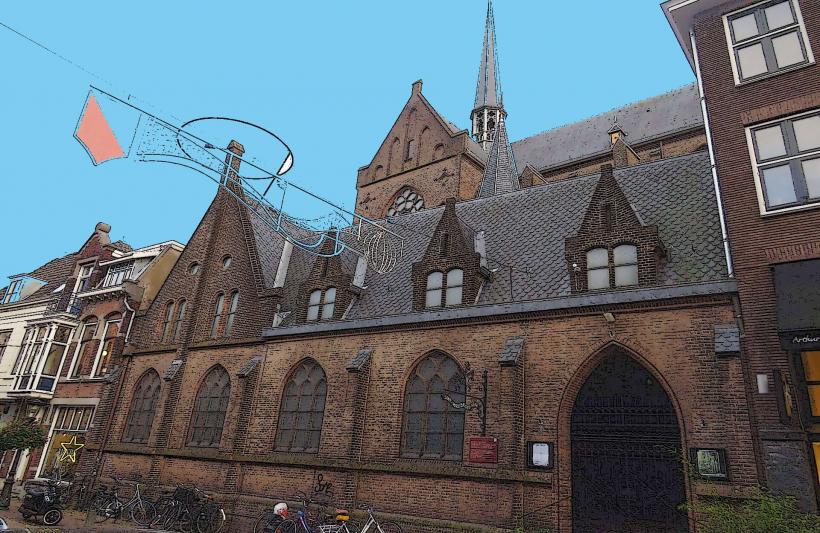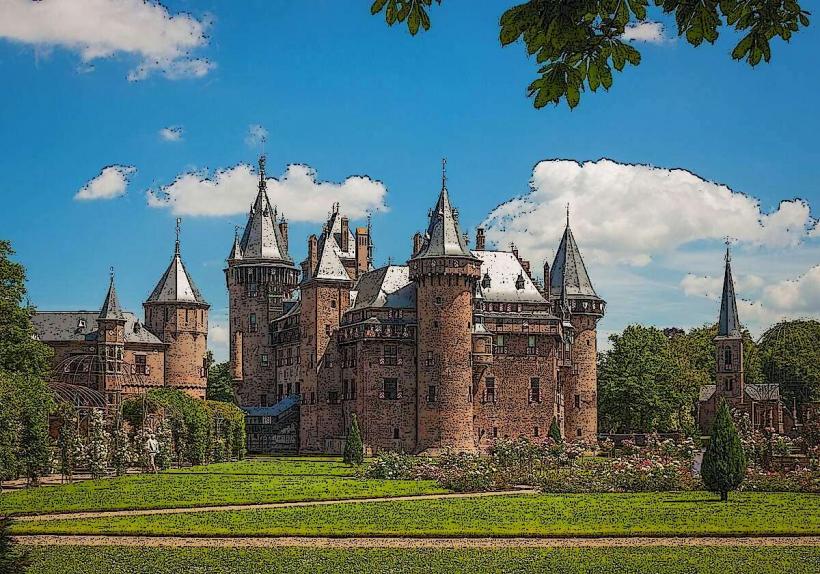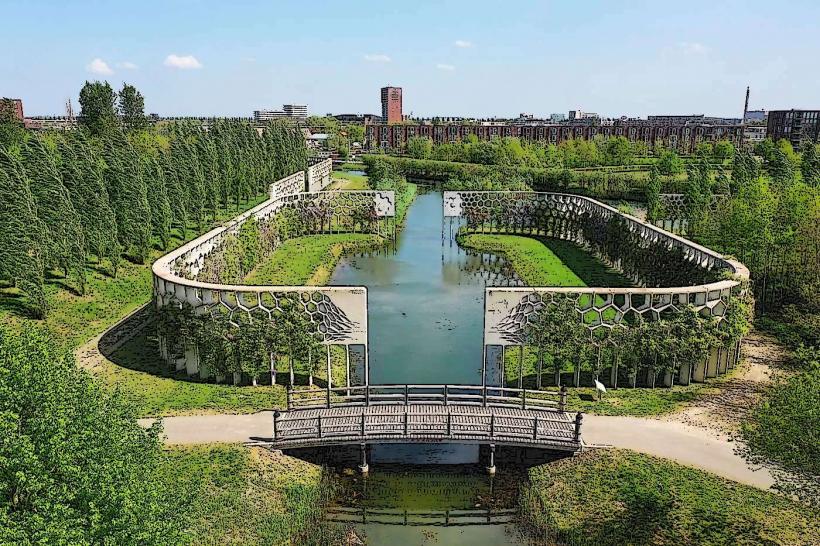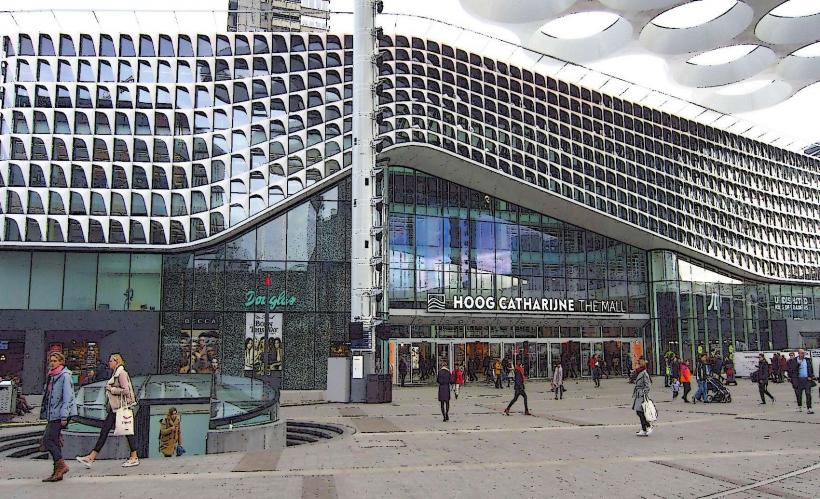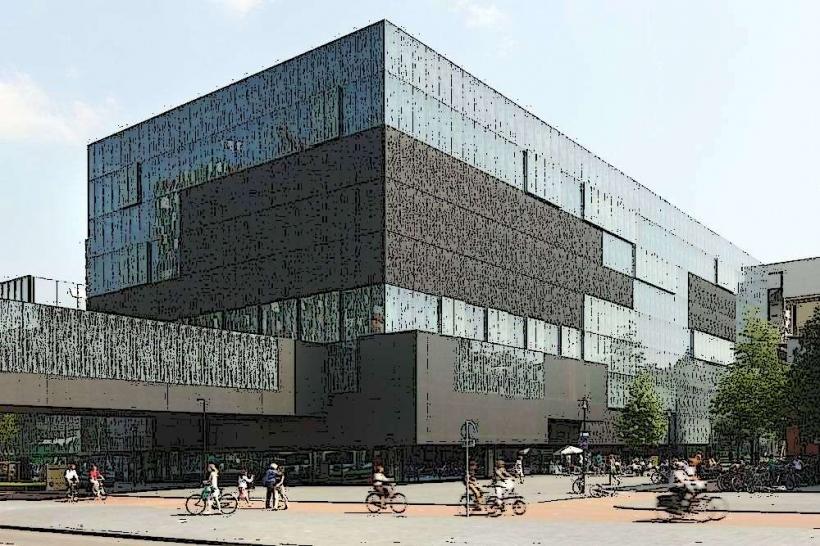Information
Landmark: Rietveld Schröder HouseCity: Utrecht
Country: Netherlands
Continent: Europe
The Rietveld Schröder House is one of the most significant architectural landmarks in the Netherlands, located in Utrecht. Designed by the renowned Dutch architect Gerrit Rietveld in 1924, it is considered a masterpiece of modern architecture and is a prime example of the De Stijl movement, which was led by famous artists like Piet Mondrian.
Here’s a detailed look at the Rietveld Schröder House:
1. Architectural Significance
- Design by Gerrit Rietveld: The house was designed by Gerrit Rietveld, one of the most influential figures of the De Stijl movement. This movement was known for its abstract use of straight lines, geometric shapes, and primary colors. Rietveld’s design for the house broke away from traditional architecture, using innovative approaches to space, form, and function.
- De Stijl Movement: The house is an excellent example of the De Stijl aesthetic, which embraced simplicity, abstraction, and the harmonious use of color. The movement’s philosophy is evident in the house's use of horizontal and vertical lines, primary colors (red, blue, yellow), and a preference for the grid structure.
- Innovative Structure: Rietveld’s design eliminated the conventional division between rooms, offering an open, flowing space that could be adapted to the needs of the inhabitants. The house features flexible walls, which could be moved or removed to change the layout and function of the interior. This was a radical departure from traditional, fixed room divisions.
2. Design and Layout
- Open Floor Plan: The Rietveld Schröder House features an open floor plan that reflects the modernist ideas of spatial fluidity. It has no internal supporting walls, allowing for flexible use of space. The walls that divide the rooms are not permanent and can be rearranged or removed, making the house adaptable to the changing needs of the occupants.
- Floating Spaces: One of the most distinctive features of the house is the idea of floating spaces. Some rooms, including the living room, are separated by partitions that are not fixed to the floor, creating a sense of openness and movement.
- Furniture Integration: Rietveld also designed much of the furniture within the house, in keeping with his ideas about the integration of architecture and interior design. Many pieces, such as the Rietveld Chair (a minimalist wooden chair with sharp angles and bright colors), are now iconic examples of early modernist design.
- Color Palette: The house’s color scheme reflects the De Stijl movement’s use of primary colors. The exterior features bold red, blue, and yellow accents, while the interior uses these colors in a more subtle and integrated manner. The result is a striking visual impact that emphasizes geometric harmony.
3. Key Features
- Sliding Panels and Flexible Walls: The Rietveld Schröder House was revolutionary in its use of sliding panels and movable walls that allowed the occupants to adapt the layout of the house according to their needs. This concept of flexibility was part of Rietveld’s desire to create a living space that was not static but could be changed.
- Cantilevered Design: The house’s structure includes a cantilevered section, with a prominent balcony that projects over the entrance. This gives the house an open, airy feel and creates a striking visual element that makes it stand out from traditional residential buildings of its time.
- Horizontal and Vertical Lines: True to De Stijl principles, the house emphasizes the use of straight, horizontal and vertical lines. These lines are most visible in the design of the windows, doors, and furniture, and contribute to the overall sense of order and balance in the design.
- Use of Glass: The house features large windows and glass walls that invite natural light into the living spaces, reinforcing the connection between the interior and the surrounding environment.
4. Historical Context and Commission
- Commissioned by Truus Schröder: The house was commissioned by Truus Schröder, a widow and mother of three children, who was looking for a modern living space that would be flexible and functional for her family. She had a strong vision for a house that would reflect her modern ideas and lifestyle.
- Radical for Its Time: At the time of its construction, the Rietveld Schröder House was considered extremely radical, as it broke away from traditional residential design. Its unconventional layout and use of color and form challenged the norms of architecture in the 1920s.
5. Cultural and Artistic Impact
- Influence on Modern Architecture: The Rietveld Schröder House is considered one of the most important works of early modernist architecture and was an inspiration to later architects who embraced the ideas of the Bauhaus and other modernist movements.
- Unconventional and Innovative: The house's design represented a clear break from traditional, closed-off, hierarchical architectural layouts. The Rietveld Schröder House redefined domestic space, offering a more fluid, functional, and innovative approach to living.
- Preservation: Today, the Rietveld Schröder House is considered an iconic landmark in architecture, and in 2000, it was designated a UNESCO World Heritage Site in recognition of its architectural and cultural significance. The house is open to the public as a museum, and visitors can explore the design, the history, and the concepts behind the De Stijl movement and modern architecture.
6. Visiting the Rietveld Schröder House
- Location: The Rietveld Schröder House is located in the Oudwijk district of Utrecht, making it easily accessible for visitors to the city.
- Museum and Tours: The house is a museum open to the public, offering guided tours and information about its architecture, history, and significance. Visitors can see the house's innovative design firsthand and understand how it represented a new approach to architecture and living.
- Architectural Tours: For those interested in modern architecture, the Rietveld Schröder House is a must-see. It stands as a testament to the forward-thinking ideas of Gerrit Rietveld and the De Stijl movement.
7. Conclusion
The Rietveld Schröder House is a cornerstone of modern architecture, showcasing the bold and innovative principles of the De Stijl movement. With its flexible spaces, open floor plan, and striking use of color, it remains one of the most influential buildings in architectural history. Visiting the house provides a unique opportunity to explore the future of design as envisioned by Gerrit Rietveld in the early 20th century and to witness how a residential space can transcend conventional limits.

